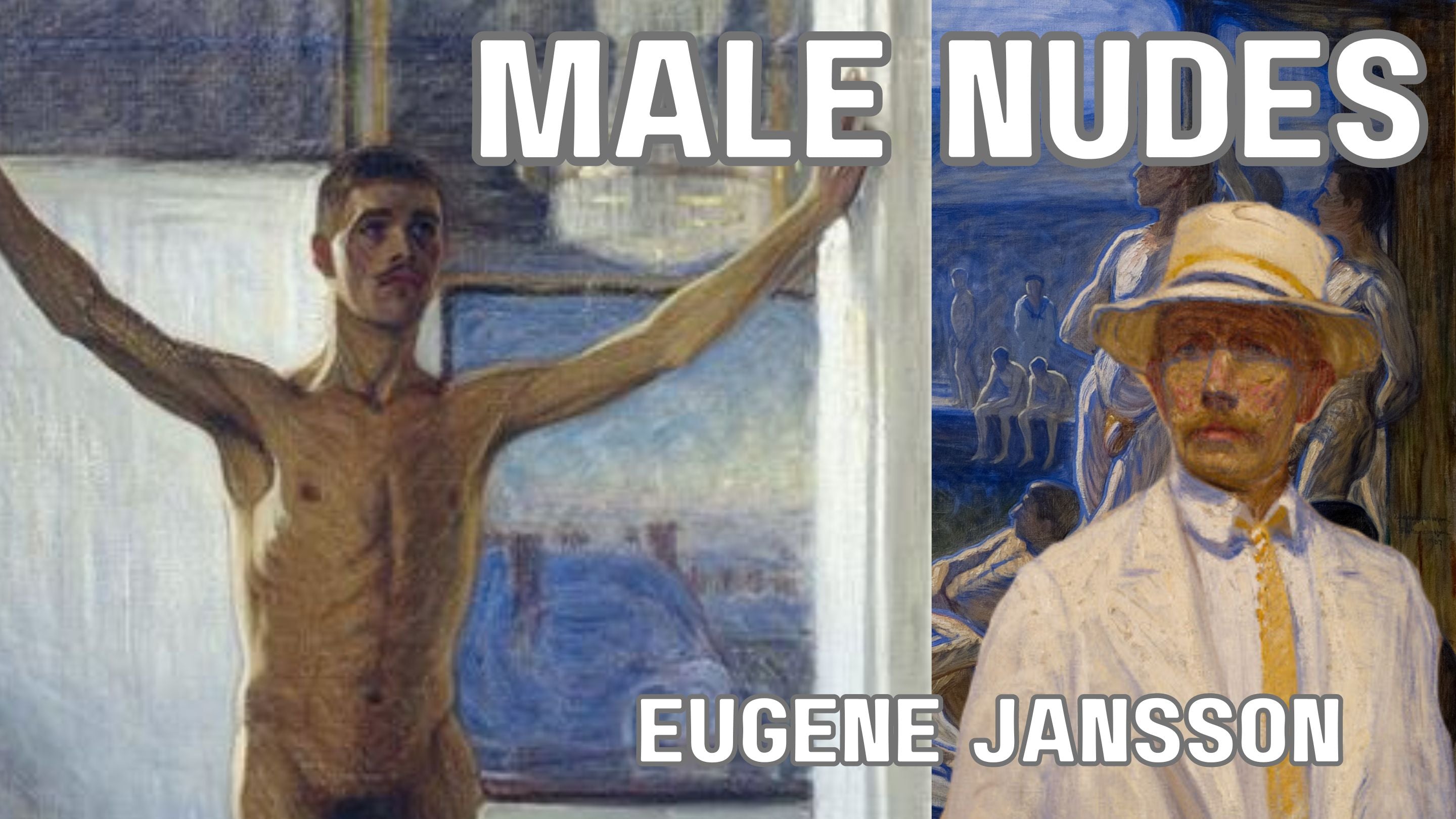Table of Contents:[hide]
Introduction
Eugène Jansson, a prominent Swedish painter, emerged as a luminary in the late 19th and early 20th centuries, leaving an indelible mark on the art world. His unique style, characterized by evocative landscapes and bold expressions, set him apart from his contemporaries. In this comprehensive exploration, we delve into the life, art, and enduring legacy of Eugène Jansson.
Early Life and Influences
Eugène Fredrik Jansson was born on March 18, 1862, in Stockholm, Sweden. Raised in a culturally rich environment, Jansson's artistic inclinations were nurtured from a young age. His early exposure to the vibrant world of the arts, literature, and music played a pivotal role in shaping his sensibilities.
Education and Early Artistic Pursuits
Jansson's formal artistic education began at the Royal Swedish Academy of Fine Arts in Stockholm, where he honed his skills and embraced various artistic movements of the time. His studies exposed him to both traditional techniques and avant-garde ideas, providing a foundation for the eclectic style that would later define his work.
The Artistic Evolution of Eugène Jansson
Impressionistic Beginnings
In the early years of his career, Jansson's paintings exhibited a strong influence of Impressionism. His mastery of light and color, evident in works like "Summer Night" and "Winter Night," showcased his ability to capture the ephemeral beauty of nature. These early pieces hinted at the artist's evolving aesthetic sensibilities.
The Shift to Expressionism
As the 20th century dawned, Jansson underwent a significant artistic transformation, embracing the burgeoning Expressionist movement. The emotional intensity and bold use of form and color in paintings like "Dance on Djurgården" marked a departure from his earlier works. Jansson's shift towards Expressionism mirrored the zeitgeist of a rapidly changing world.
Jansson's Fascination with Light and Nature
Nocturnal Scenes and Luminosity
One of Jansson's distinctive contributions to the art world was his fascination with nocturnal scenes. His "Night at Skansen" series is a testament to his ability to capture the ethereal beauty of the night, employing a luminosity that set his work apart. Jansson's nocturnal landscapes evoke a sense of mystery and introspection, inviting viewers into a realm of heightened sensory experience.
Urban and Natural Landscapes
Jansson's oeuvre extends beyond nocturnal scenes, encompassing a rich tapestry of urban and natural landscapes. From the bustling streets of Stockholm to the serene beauty of the Swedish countryside, his paintings reflect a deep connection to the environment. Through his brushstrokes, Jansson conveyed not only the physicality of the landscapes but also the emotional resonance he felt towards them.
Jansson's Personal Struggles and Triumphs
Struggles with Identity and Sexuality
Eugène Jansson faced personal challenges related to his identity and sexuality, which were unconventional for the time. His exploration of homoerotic themes in art, as seen in works like "Embrace," was both groundbreaking and controversial. Jansson's courage in expressing his authentic self through his art adds layers of complexity to his legacy, making him a trailblazer in more ways than one.
Recognition and Artistic Triumphs
Despite the societal norms of the era, Jansson found recognition for his artistic prowess. His paintings were exhibited in prominent galleries, and he received acclaim for his contributions to the Swedish art scene. Jansson's ability to navigate the challenges of his personal life while achieving artistic triumphs underscores the resilience and power of his creative spirit.
Legacy and Influence
Impact on Swedish Art
Eugène Jansson's impact on Swedish art cannot be overstated. His role in bridging the gap between traditional and modern artistic expressions contributed to the evolution of Swedish art during a transformative period. Jansson's influence extended beyond his contemporaries, inspiring subsequent generations of artists to explore new avenues of creative expression.
Rediscovery and Contemporary Relevance
While Jansson's work experienced a period of relative obscurity, the late 20th century witnessed a renewed interest in his paintings. Museums and art enthusiasts rediscovered the depth and relevance of his contributions. Today, Jansson's legacy continues to resonate, with his paintings displayed in major art institutions and his influence evident in the works of contemporary artists.
FAQs about Eugène Jansson
1. Who was Eugène Jansson?
Eugène Jansson was a Swedish painter born on March 18, 1862, in Stockholm. He gained prominence in the late 19th and early 20th centuries for his unique blend of Impressionist and Expressionist styles, marked by his nocturnal scenes and exploration of homoerotic themes.
2. What is Jansson's most famous painting?
While opinions may vary, one of Jansson's most famous paintings is "Dance on Djurgården," which exemplifies his shift towards Expressionism. The painting captures the dynamism and emotional intensity characteristic of this phase in Jansson's artistic evolution.
3. How did Jansson contribute to the art world?
Jansson contributed to the art world by bridging the gap between traditional and modern artistic expressions. His fascination with nocturnal scenes, bold use of color, and exploration of personal and societal themes set him apart, influencing the trajectory of Swedish art during a transformative period.
4. What challenges did Jansson face in his personal life?
Eugène Jansson faced challenges related to his identity and sexuality, exploring homoerotic themes in his art at a time when such expressions were controversial. Despite societal norms, he navigated these challenges, leaving a lasting impact on the art world.
5. How did Jansson's work gain recognition in contemporary times?
While Jansson's work experienced a period of obscurity, the late 20th century saw a renewed interest in his paintings. Museums and art enthusiasts rediscovered the depth and relevance of his contributions, leading to a resurgence of appreciation for his legacy.
Conclusion
Eugène Jansson's artistic journey is a testament to the transformative power of creativity and the resilience of the human spirit. From his early Impressionistic works to his bold foray into Expressionism, Jansson's paintings continue to captivate audiences, inviting them into a world where light, nature, and personal introspection converge. As his legacy endures, Eugène Jansson remains a celebrated figure in the annals of art history, leaving behind a rich tapestry of emotion and innovation.







